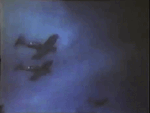Greg Boeser
1st Lieutenant
And this doesn't even mention the first combat use of the F4U from carriers on 11 Nov 1943, when land-based VF-17 (which was fully carrier qualified) flew out to provide CAP for the fleet while the carrier based air groups attacked Rabaul. VF-17 landed aboard ESSEX and BUNKER HILL, refueled, and launched to provide a second CAP mission, driving off a Japanese air attack, before returning to its land base. VF-17 had been part of BUNKER HILL's air group until it was beached at Pearl Harbor following the USN's decision to standardize on F6Fs for carrier duty.As I said, you don't pay much attention. Goody for you, you found an F4U enthusiasts web site . . . did you read the part where it says at https://www.jdsf4u.be/dates-f4u-corsair:
JANUARY 29, 1944 , First Corsair combat operations from U.S. carrier, USS Enterprise, by VF(N)-101
and
APRIL 3,1944 , First Royal Navy combat missions from HMS Victorious.
Obviously you did not.
Just as obviously whoever gushed out at Vought F4U Corsair | Classic Warbirds missed that part too.
Real history is such a bite for the uninformed and slapdash.

